Sodium thiocyanate
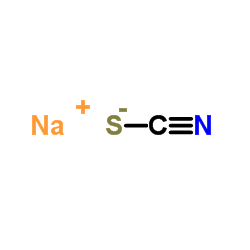
Sodium thiocyanate structure
|
Common Name | Sodium thiocyanate | ||
|---|---|---|---|---|
| CAS Number | 540-72-7 | Molecular Weight | 81.072 | |
| Density | 1.295 g/mL at 20 °C | Boiling Point | 146ºC at 760mmHg | |
| Molecular Formula | CNNaS | Melting Point | 287 °C (dec.)(lit.) | |
| MSDS | Chinese USA | Flash Point | 42.1ºC | |
| Symbol |

GHS07 |
Signal Word | Warning | |
Use of Sodium thiocyanateSodium thiocyanate reduces plasma levels of the pro-inflammatory cytokine IL-6, and increases the anti-inflammatory cytokine IL-10 levels. Sodium thiocyanate also significantly reduces of ROS formation[1]. |
| Name | sodium thiocyanate |
|---|---|
| Synonym | More Synonyms |
| Description | Sodium thiocyanate reduces plasma levels of the pro-inflammatory cytokine IL-6, and increases the anti-inflammatory cytokine IL-10 levels. Sodium thiocyanate also significantly reduces of ROS formation[1]. |
|---|---|
| Related Catalog | |
| Target |
IL-6, IL-10, ROS[1] |
| In Vitro | Sodium thiocyanate attenuates atherosclerotic plaque formation and improves endothelial regeneration in mice. Sodium thiocyanate improves inflammatory cytokine levels in the plasma as well as ROS and chlorotyrosine formation in the vessel wall[1]. |
| References |
| Density | 1.295 g/mL at 20 °C |
|---|---|
| Boiling Point | 146ºC at 760mmHg |
| Melting Point | 287 °C (dec.)(lit.) |
| Molecular Formula | CNNaS |
| Molecular Weight | 81.072 |
| Flash Point | 42.1ºC |
| Exact Mass | 80.964912 |
| PSA | 49.09000 |
| LogP | 0.66498 |
| Storage condition | 2-8°C |
| Stability | Stable. Incompatible with acids, strong bases. May decompose on exposure to light. Contact with acid liberates highly toxic gas. |
| Water Solubility | 139 g/100 mL (21 ºC) |
CHEMICAL IDENTIFICATION
HEALTH HAZARD DATAACUTE TOXICITY DATA
|
| Symbol |

GHS07 |
|---|---|
| Signal Word | Warning |
| Hazard Statements | H302 + H312 + H332-H319-H412 |
| Supplemental HS | Contact with acids liberates very toxic gas. |
| Precautionary Statements | P273-P280-P305 + P351 + P338 |
| Personal Protective Equipment | dust mask type N95 (US);Eyeshields;Gloves |
| Hazard Codes | Xn:Harmful; |
| Risk Phrases | R20/21/22;R32;R52/53 |
| Safety Phrases | S36/37-S61-S13 |
| RIDADR | NONH for all modes of transport |
| WGK Germany | 1 |
| RTECS | XL2275000 |
| HS Code | 2842901100 |
| Precursor 8 | |
|---|---|
| DownStream 9 | |
| HS Code | 2930909090 |
|---|---|
| Summary | 2930909090. other organo-sulphur compounds. VAT:17.0%. Tax rebate rate:13.0%. . MFN tariff:6.5%. General tariff:30.0% |
|
Effect of co-ligands on chemical and biological properties of (99m)Tc(III) complexes [(99m)Tc(L)(CDO)(CDOH)2BMe] (L=Cl, F, SCN and N3; CDOH2=cyclohexanedione dioxime).
Nucl. Med. Biol. 41(10) , 813-24, (2014) (99m)Tc-Teboroxime ([(99m)TcCl(CDO)(CDOH)2BMe]) is a member of the BATO (boronic acid adducts of technetium dioximes) class of (99m)Tc(III) complexes. This study sought to explore the impact of co-lig... |
|
|
Evaluation of an electrochemical method for the analysis of enzymatic inhibition reactions.
Anal. Sci. 29(1) , 25-9, (2013) An approximate equation for bioelectrocatalitic current was applied to an inhibition reaction analysis of bilirubin oxidase by anion (Cl(-), SCN(-), and F(-)) in order to assess the possibility of the... |
|
|
Supramolecular helix-to-helix induction: a 3D anionic framework containing double-helical strands templated by cationic triple-stranded cluster helicates.
Angew. Chem. Int. Ed. Engl. 47(9) , 1711-4, (2008)
|
| Sodium rhodanate |
| EINECS 208-754-4 |
| Sodium isothiocyanate,Sodium rhodanate,Sodi |
| Sodium isothiocyanate |
| sodium,thiocyanate |
| Sodium sulfocyanate |
| Sodium isothiocyanate,Sodium rhodanate,Sodium rhodanide |
| Sodium rhodanide |
| Thiocyanic acid, sodium salt (1:1) |
| Sodium thiocyanate |
| MFCD00011123 |
 CAS#:773837-37-9
CAS#:773837-37-9 CAS#:10544-50-0
CAS#:10544-50-0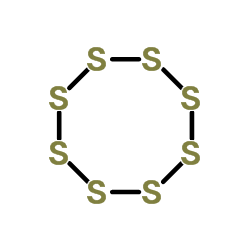 CAS#:7704-34-9
CAS#:7704-34-9 CAS#:13798-23-7
CAS#:13798-23-7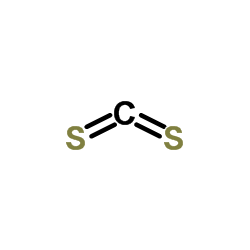 CAS#:75-15-0
CAS#:75-15-0 CAS#:7664-41-7
CAS#:7664-41-7 CAS#:497-19-8
CAS#:497-19-8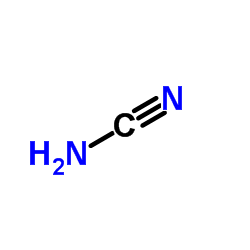 CAS#:420-04-2
CAS#:420-04-2![[(2R,3S,5R)-2-(hydroxymethyl)-5-(5-methyl-2,4-dioxopyrimidin-1-yl)oxolan-3-yl] thiocyanate structure](https://image.chemsrc.com/caspic/078/108895-44-9.png) CAS#:108895-44-9
CAS#:108895-44-9![1-[(2R,4S,5S)-5-(hydroxymethyl)-4-isothiocyanatooxolan-2-yl]-5-methylpyrimidine-2,4-dione structure](https://image.chemsrc.com/caspic/317/130945-07-2.png) CAS#:130945-07-2
CAS#:130945-07-2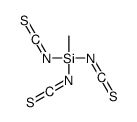 CAS#:10584-95-9
CAS#:10584-95-9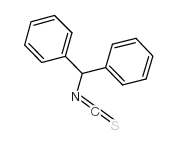 CAS#:3550-21-8
CAS#:3550-21-8 CAS#:3226-47-9
CAS#:3226-47-9 CAS#:4404-45-9
CAS#:4404-45-9 CAS#:3774-53-6
CAS#:3774-53-6 CAS#:43045-16-5
CAS#:43045-16-5 CAS#:3694-57-3
CAS#:3694-57-3
